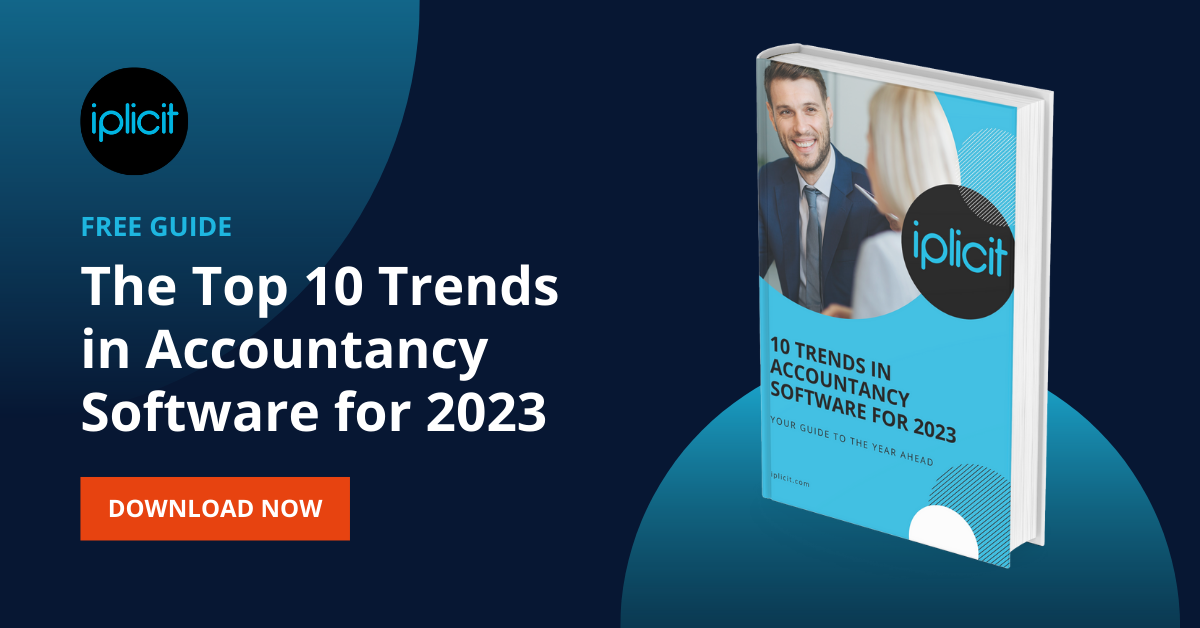In the past couple of years, many organisations have absorbed a generation’s worth of change and surprises. Huge events such as Covid, Brexit, an unfolding recession and galloping inflation have taught us how unpredictable the world is. But it’s still possible to spot some of the trends that will shape the way we do business in 2023 and beyond.
Rather than being a tool standing apart from those trends, accountancy software will be at the heart of some of the most profound shifts in the world of work.

There are many accounting software trends that professionals in the industry need to keep track of to stay competitive in their field in the New Year.
Here are three key trends for 2023:
1. Automation will make even more sense
More than ever, it will be necessary for organisations to ensure their people are not spending hours doing the kind of routine tasks that software could be handled in seconds. It’s a waste of that most costly resource: staff time. And as we’ll see, it’s not good for staff wellbeing.
Savvy organisations will be increasingly keen to let software take over the jobs that require laborious inputting of data, or the tedious business of extracting information from one system and putting it into another.
The advantages of automation are clear ‘day-in, day-out’ but they mount up when audit time comes around.
Auditors spend an inordinate amount of time chasing down the intercompany transactions that need to be eliminated from consolidated accounts. And, of course, that’s time that the client is paying for. Software that takes care of this work is well on the way to paying for itself.
2. Software will play an ever-bigger role in staff wellbeing
There was an increasing awareness, even before Covid, that looking out for staff wellbeing made business sense as well as being the right thing to do.
The coronavirus crisis, which prompted so many people to think about their relationship to their jobs, has made the subject even more important.
Clunky legacy systems can severely drag down the morale of a finance team and put people under stress. Staff are likely to know full well that they are working with outdated software – and that people in similar roles in other organisations don’t have to do most of these menial tasks.
People in that situation will be inclined to keep an eye on opportunities elsewhere. And in the meantime, they are being constrained from spending time on the work which enthuses them and adds value to the business.
Record numbers of people have disappeared from the workforce altogether since 2020. In 2022, there were 600,000 more people not participating in the jobs market than in 2019. The skills-rich over-50s were particularly likely to have left the labour market – and that trend is not expected to sharply reverse, even if unemployment rises.
Against this background, software which frees people from grunt work will play an important part in maintaining satisfied and loyal teams.
3. The multi-year contract could die
It’s a sales tactic which may die an overdue death in 2023: the multi-year contract.
It’s often used by the supplier of an inefficient on-premises finance system when a contract is coming to an end and a customer is considering other options. Instead of signing up for another year, why not sign up for five years in return for a discount?
The discount might sound attractive, but the offer tends to serve the interests of the supplier, not the customer. Over the life of that multi-year contract, the user is saddled with software that was far from new when they renewed their commitment, and which is increasingly unfit for the job.
Meanwhile, the pressure is off the supplier, and it can be relaxed about its standards of performance and customer service.
It may be that the multi-year contract will remain an option for customers exercising a free choice between suitable products. But the unscrupulous use of it to handcuff the client looks increasingly unsustainable.
New forces in the market
These trends represent fundamental changes in customers’ requirements and in the working world. And they are already opening up a space for challengers in the market for accounting software.
Previously, many organisations needing a finance system were caught between two equally unpalatable options.
On the one hand, they could stick with legacy software – even if it was unwieldy to use and did not make people’s working lives easier by automating common processes.
Alternatively, the organisation could upgrade to one of the big, enterprise-level software packages which are rich in features and power but come with a price tag that is likely to be prohibitive for the small or medium-sized operation.
The need for something in between these two options has created an opportunity for other players to disrupt the market. The big, overarching trend could be that 2023 becomes the year of the affordable, mid-market cloud provider.
Want to know more?
Find out what other trends we anticipate for this year and download our full guide 'The Top 10 Accountancy Software Trends for 2023' here.
By downloading this Free Guide you will learn...
- The threats and opportunities facing your finance department - and the wider business
- What savvy finance teams will be doing to improve efficiency and productivity
- How your choice of software has impacts beyond processes and operations
- What features you should be considering for your finance system



